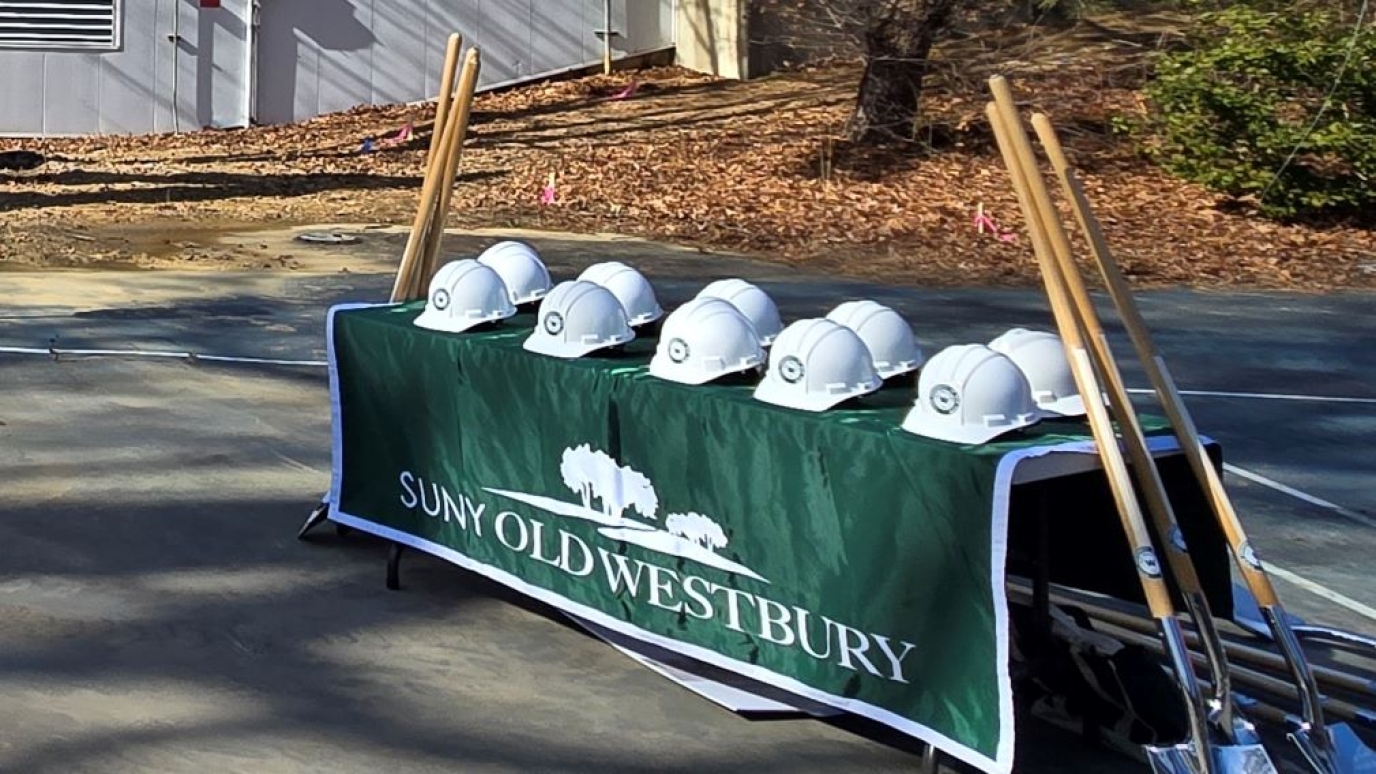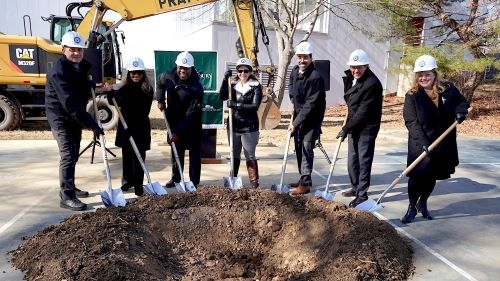
Bringing the latest in teaching and research to students in the sciences is the clear goal for what will be an improved, larger Natural Science Building on the campus of SUNY Old Westbury.
In conjunction with an announcement from New York State Governor Kathy Hochul, the campus broke ground on an expected $200 million renovation and expansion of its science facility on Wednesday, February 5, 2025.
"The renovation and expansion of our current science facilities into a modern center of learning is crucial to our ability to continue to grow as an institution and to prepare young men and women for the positions in hospitals, laboratories, wind and chip manufacturing, public health, and more that await them," said President Timothy E. Sams.
Attending the ceremonial groundbreaking on campus were SUNY Board of Trustees Chairman Meryl Tisch, SUNY Chancellor John B. King, Jr., and SUNY Senior Vice Chancellor for Capital Projects Robert Haelen, along with more than 100 members of the campus and local community.
"The announcement of these improvements to the Natural Sciences Building is exciting because it represents and investment in future of students like me," said Gabriella Anzalone, who is expected to be among the first Physics graduates in the campus' history this May after having already earned a B.S. in Biological Sciences in 2022. "These new spaces will be an indication to future students that they can and should dream bigger."
The project will turn the 40-year-old building into the 70,000-square-foot center of science learning and research the campus needs to better prepare graduates for work in scientific, medical and technological fields. Once complete, the facility will feature modernized teaching laboratories, a new campus greenhouse, and collaboration spaces for teaching and co-curricular activities.
"This investment right here in my district will transform existing infrastructure to provide SUNY Old Westbury with the latest technology to help increase sustainability and reduce greenhouse gas emissions," said New York State Assemblyman Charles Lavine. “It will also help students, faculty, and researchers meet the demands of modern science education and research."
These new spaces will be an indication to future students that they can and should dream bigger.
-- Gabriella Anzalone '25
The Natural Sciences Building is home to the campuses six science majors: Biological Sciences, Bionformatics and Computational Biology, Biochemistry, Chemistry, Public Health and Physics. In all, approximately 650 students are enrolled in those majors. The building also serves more than 500 campus and local students through SUNY Old Westbury’s active Collegiate Science, Education and Technology Program and its Science and Technology Entry Program, for local high school students.
"I applaud SUNY Old Westbury and Governor Hochul in prioritizing student education at our SUNY Old Westbury campus," said New York State Senator Jack Martins. "This refurbished facility will provide better opportunities for generations of students and have a significant impact as they pursue careers thereafter."
New York State Investment in Higher Education, Sustainability
Made possible through the investment of New York State, the project will see the complete renewal of the building, which first opened in 1985, including a deep energy retrofit in keeping with SUNY’s Climate and Sustainability Action Plan.
“Once again, people will be looking at New York State as a leader in developing sustainable, green energy solutions that will not only enhance the academic experience for our students and faculty but also contribute to a healthier environment for all New Yorkers,” said Governor Kathy Hochul in announcing the project. “With this state-of-the-art, energy-efficient facility, we are one step closer to achieving net-zero greenhouse gas emissions and zero waste across the SUNY system while also providing new opportunities for green workforce development and resilience in the face of climate change.”
The project is part of SUNY’s Climate and Sustainability Action Plan to achieve net-zero SUNY-wide greenhouse gas emissions and zero waste. Full details about the plan can be found on the SUNY website. The plan not only aims to achieve net-zero SUNY-wide greenhouse gas emissions and zero waste in line with Governor Kathy Hochul’s climate goals, but also addresses increasing academic and research opportunities, expands green workforce development, and defines actions related to campus and building operations and capital project development to design for resiliency.
The renovated Natural Sciences Building is expected to be 50 percent more energy efficient and will boast a geothermal system for heating and cooling, as well as energy efficient glazing on the facility’s windows. The final future phase is expected to include a green roof.
A Three-Phase Project
The Natural Science Building project will be constructed in three phases. The first phase, moving forward with the recent groundbreaking, focuses on the replacement of outdated laboratory spaces, the relocation of the specialized research equipment and support space, and the creation of surge space. This initial step lays the groundwork for the comprehensive modernization and expansion of the building.
The second phase will construct a new addition to the building to house additional space for the departments. The third phase will include the renovation of the balance of interior as well as the exterior rehabilitation of the facility.
When all phases are completed, the project will transform the Natural Sciences Building into a state-of-the-art facility, providing students, faculty, and researchers with the resources and space needed to meet the demands of modern science education and research.

